Spring 2010 in Southeast Ohio
We had a rather cold and snowy winter here in Southeast Ohio. Most of
January and February looked like this:
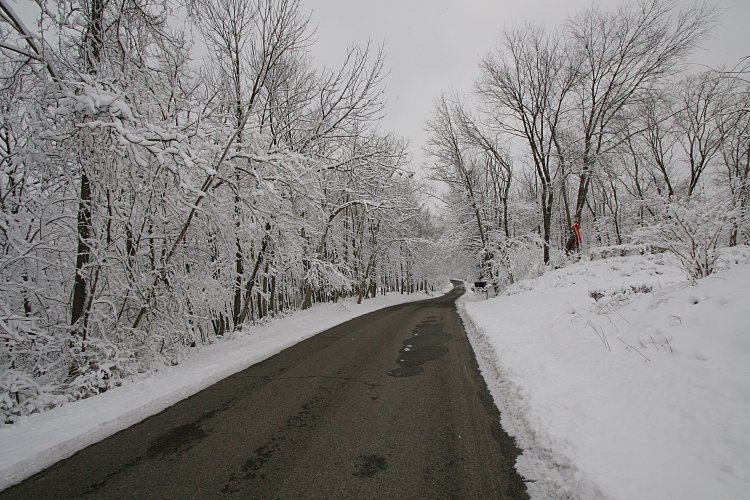
The road in front of our house.
It's not like we don't get snow, but usually it doesn't stick around long.
Here are some things I've seen so far this spring,
in more-or-less chronological order.
The first outing of the early spring was with Brian Folt and my son.
We turned up this:
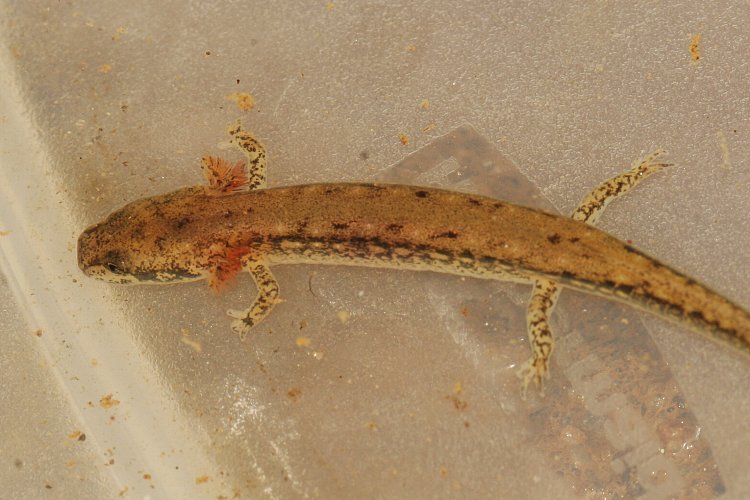
A large twolined larva.
And these:
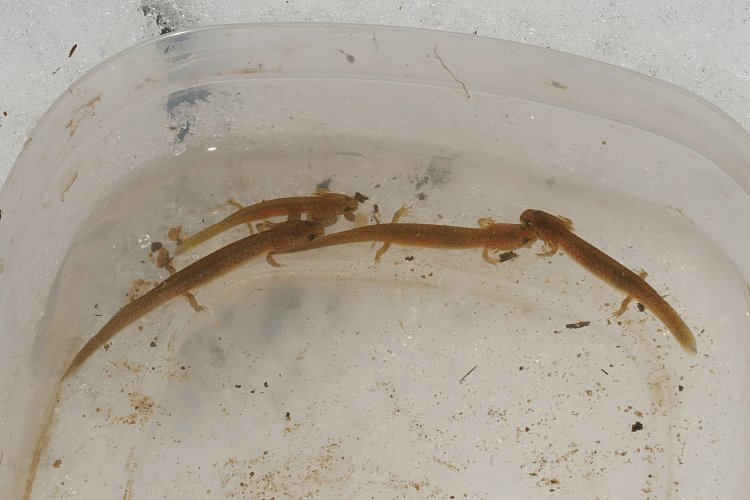
Pseudotriton ruber.
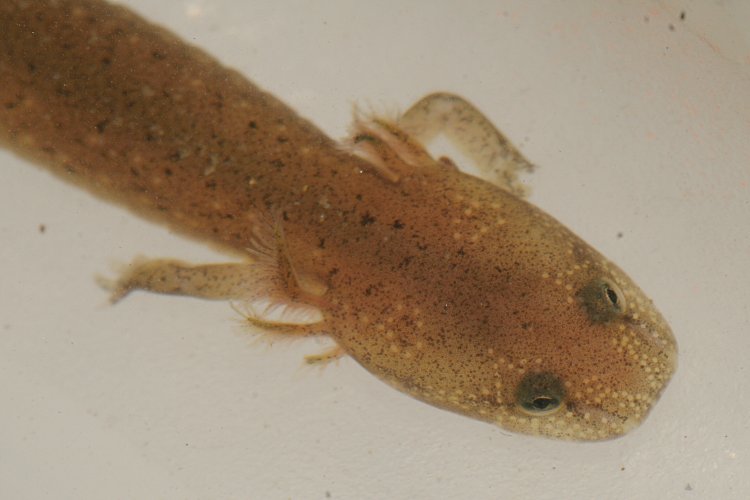
A closer look at one of them.
The next day I saw these:
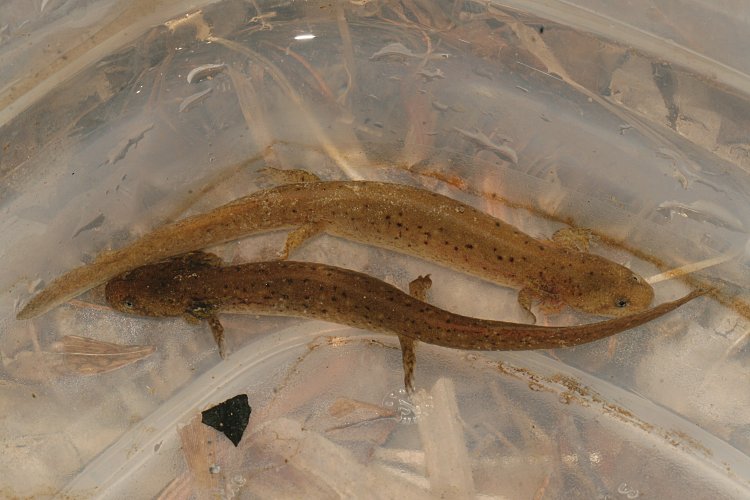
A pair of Pseudotriton montanus.
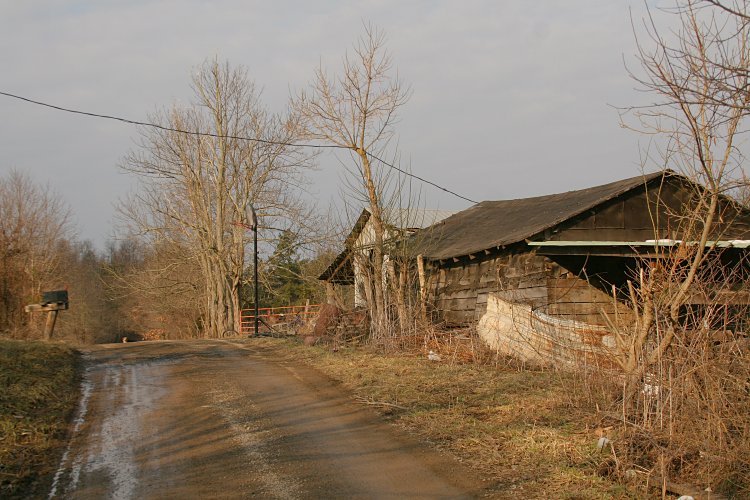
A simple rural dwelling with a basketball hoop in the dirt road,
near where the Mud Salamander larvae were seen.
Later the same day, I was surprised to hear wood frogs calling as I was
descending a narrow and steep ravine. It turned out the creek was naturally
dammed up by a fallen tree, creating a small pool.
Here's a photo, taken from a good distance away, before they all dived
to the bottom:
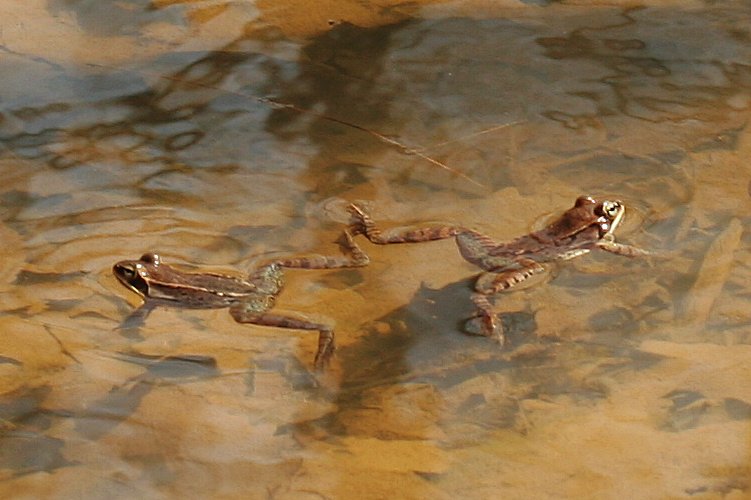
Wood Frogs.
The above Wood Frogs were seen after the weather had started to warm up a bit,
but it had not rained yet. When the rains did come (March 11-13),
the amphibians did come out in abundance.
I'll start with Western Chorus Frogs (Pseudacris triseriata).
They are not widely distributed in southeast Ohio. I've heard them calling
and seen them DOR, but not alive. I was happy to be able to change that:
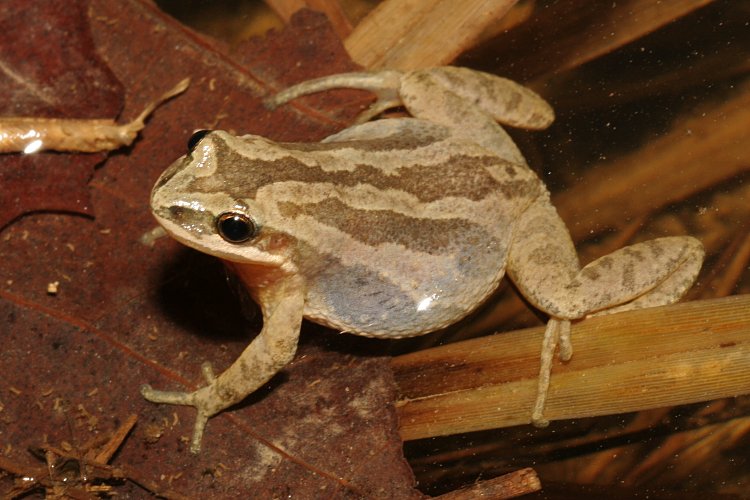
Western Chorus Frog.
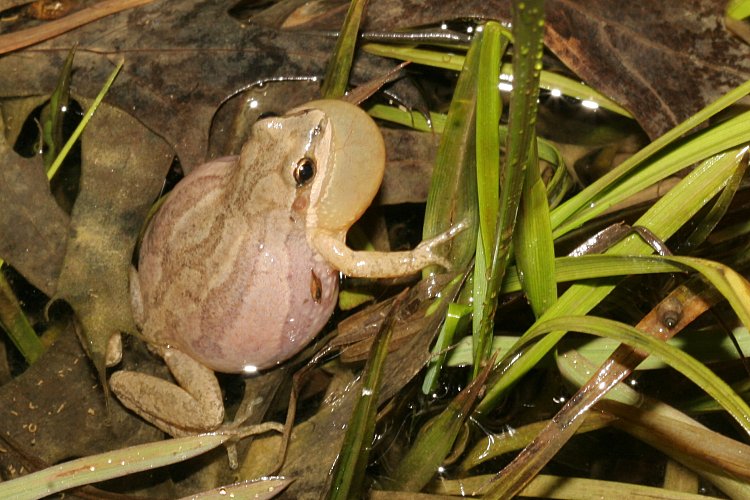
Western Chorus Frog.
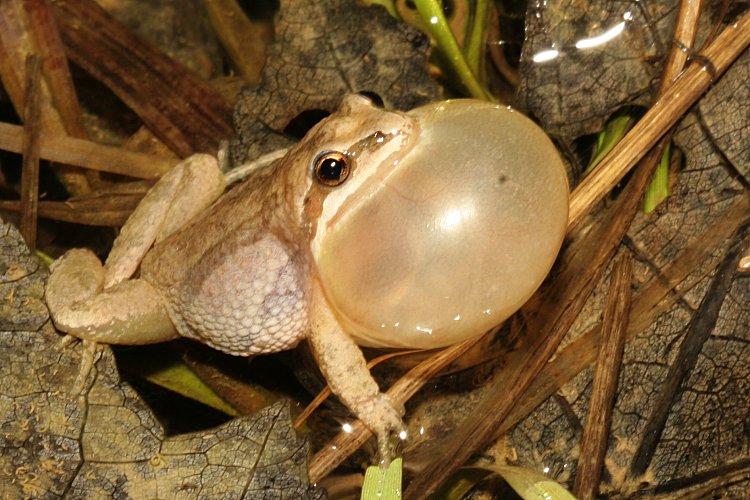
Western Chorus Frog.
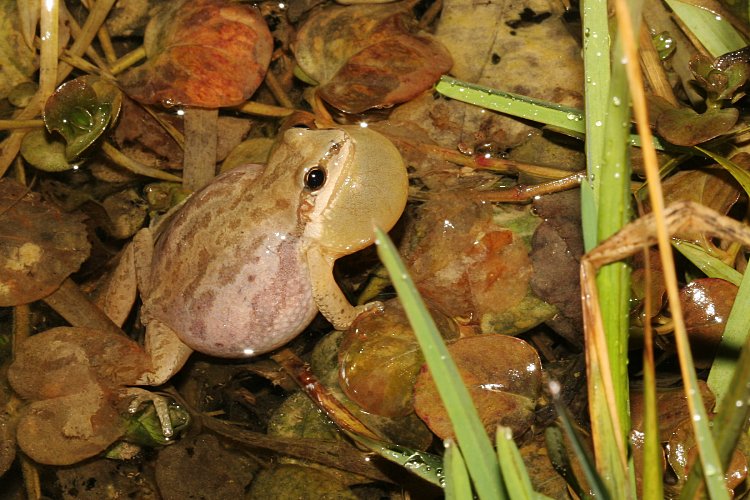
Western Chorus Frog.
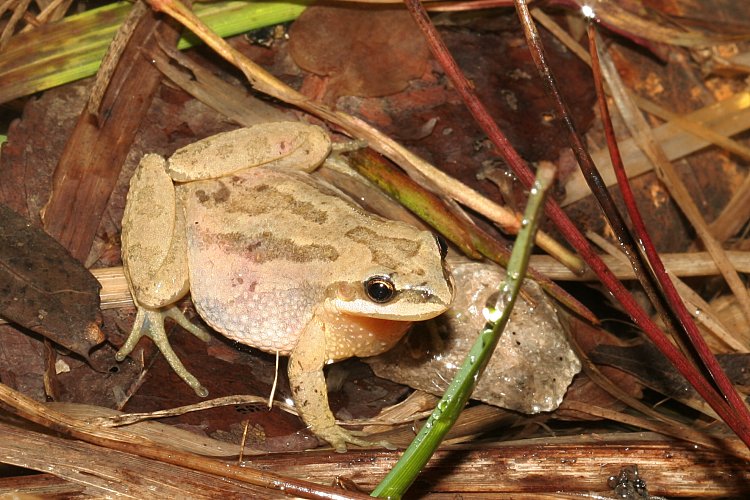
Western Chorus Frog.
You may recall that in the late spring of last year I found an
Ambystoma barbouri/texanum in a new area. See
this
report. It turned out to be
Ambystoma barbouri, at least according to mtDNA.
This year I roadcruised the area under prime early-spring conditions.
They proved to be abundant:
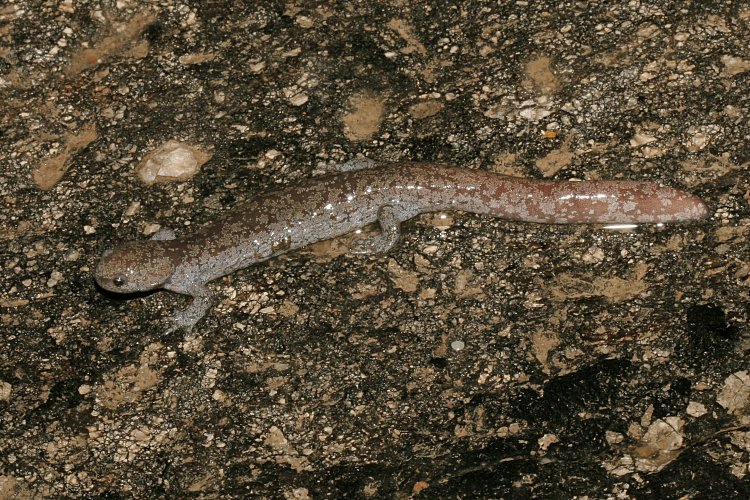
Ambystoma barbouri.
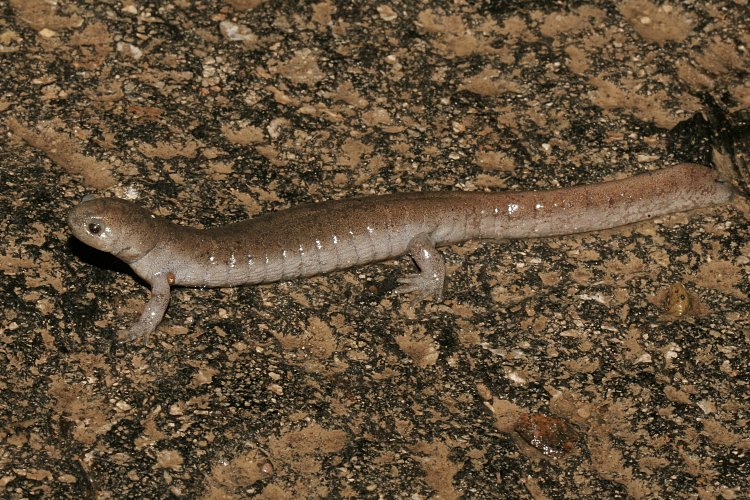
Ambystoma barbouri.
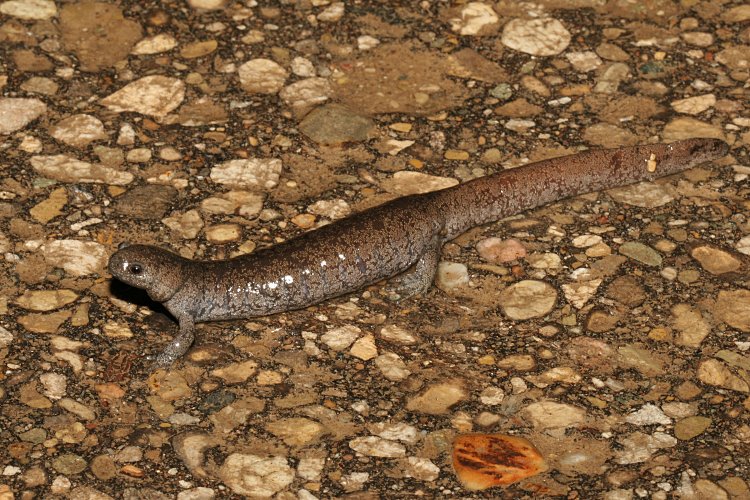
Ambystoma barbouri.
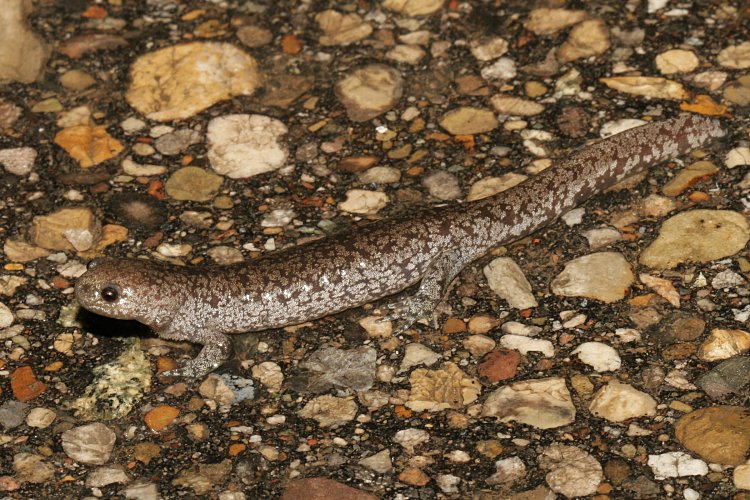
Ambystoma barbouri.
I also did some looking during the daytime. It turns out that this area of
southeast Ohio lacks rocks, which is rather unusual. As I was hiking
along a low-gradient creek I found this:
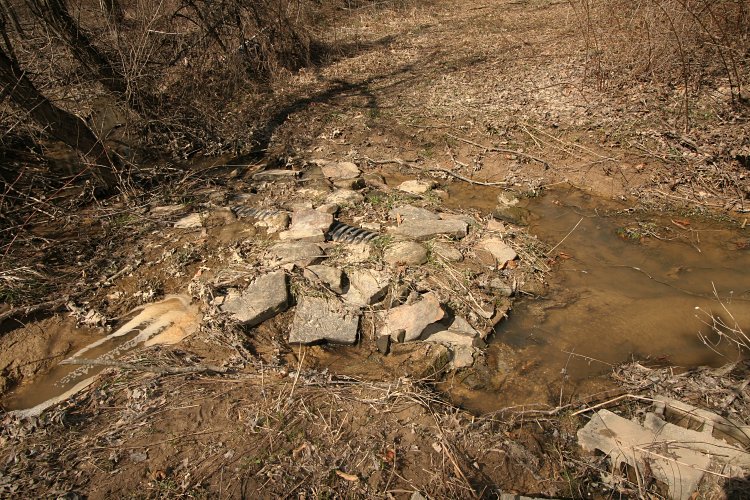
Some imported rocks and cinder blocks at an old culvert.
Sure enough, on the underside of one of the submerged rocks,
I found this:
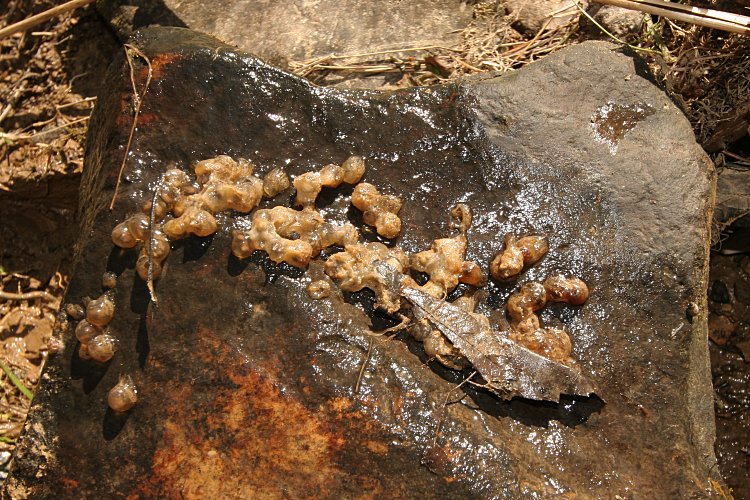
barbouri eggs.
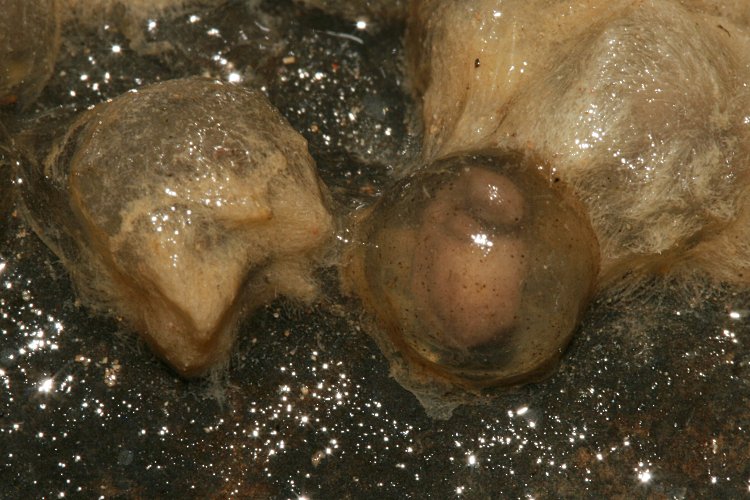
barbouri eggs.
This definitely fits the M.O. of barbouri. Kind of begs the question
of where else they lay their eggs, but I would imaging logs, crayfish tunnels,
or leaf litter could suffice. Extensive flipping of logs, in and out of the
water, yielded zip.
Here are some more animals seen roadcruising in the early spring:
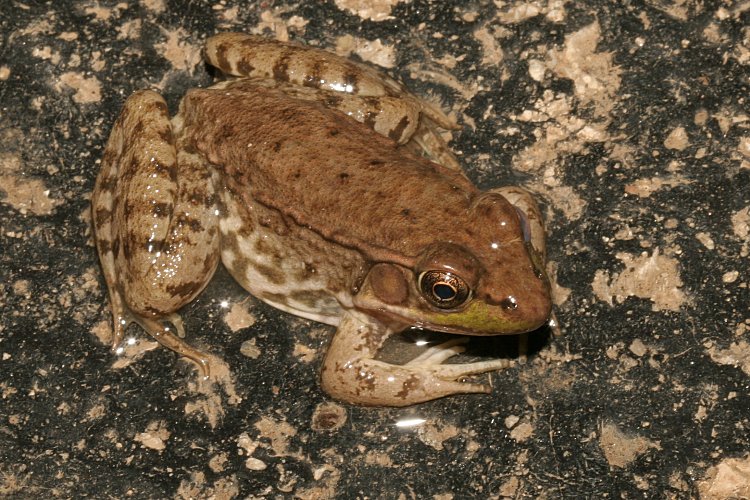
Green Frog.
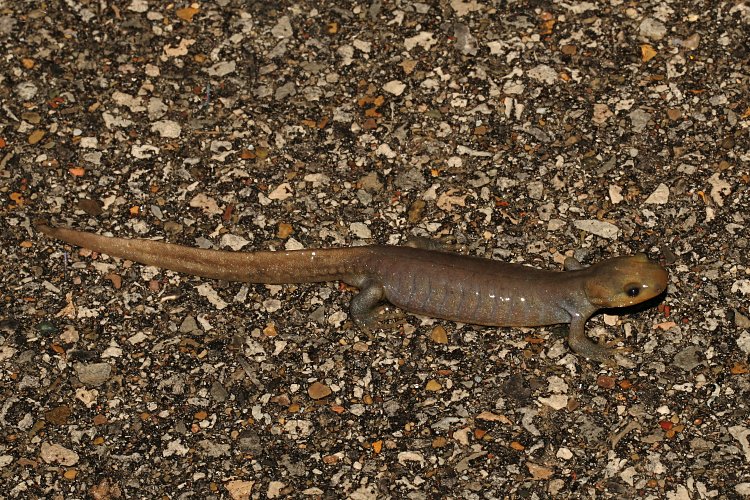
Ambystoma jeffersonianum.
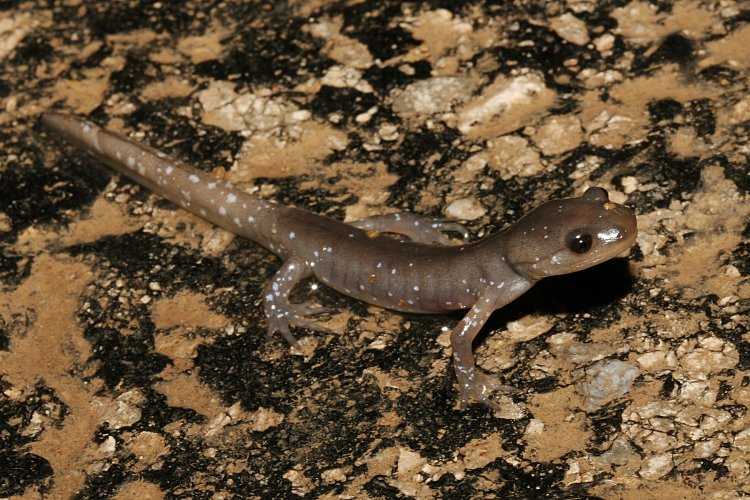
A young jeffersonianum.
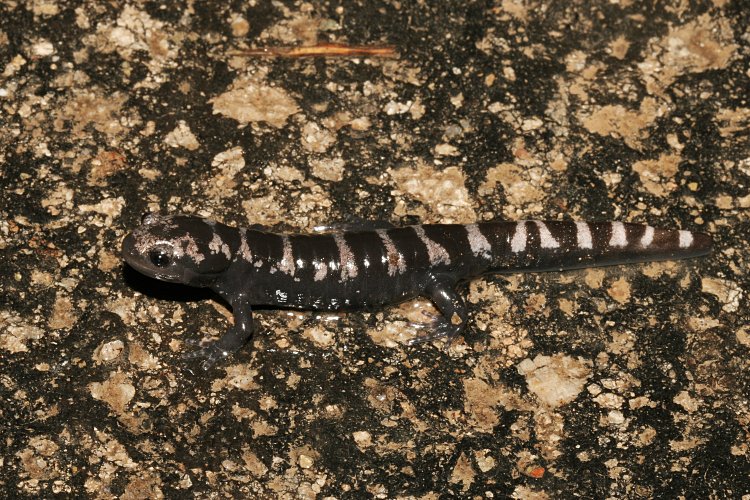
Marbled Salamander.
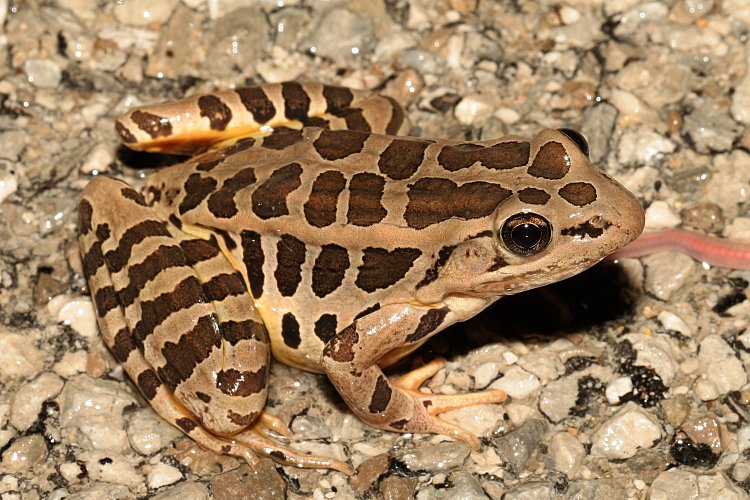
Pickerel Frog.
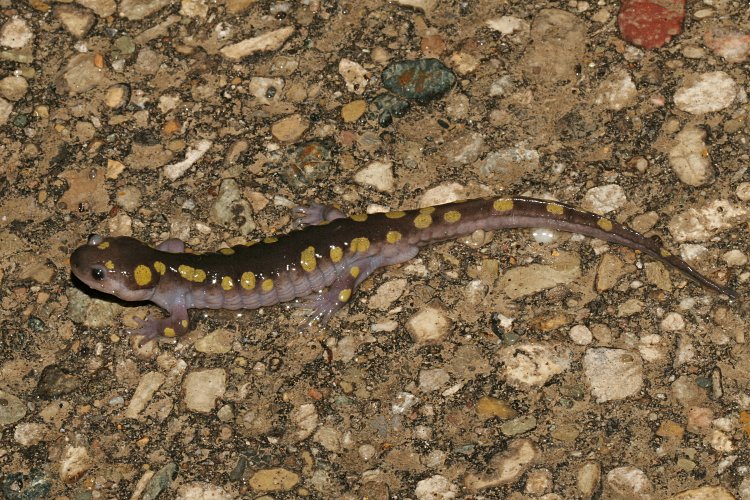
Spotted Salamander.
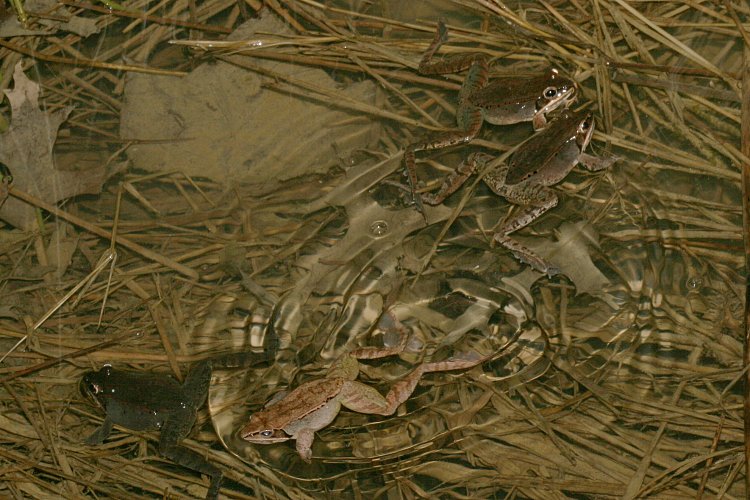
Wood Frogs.
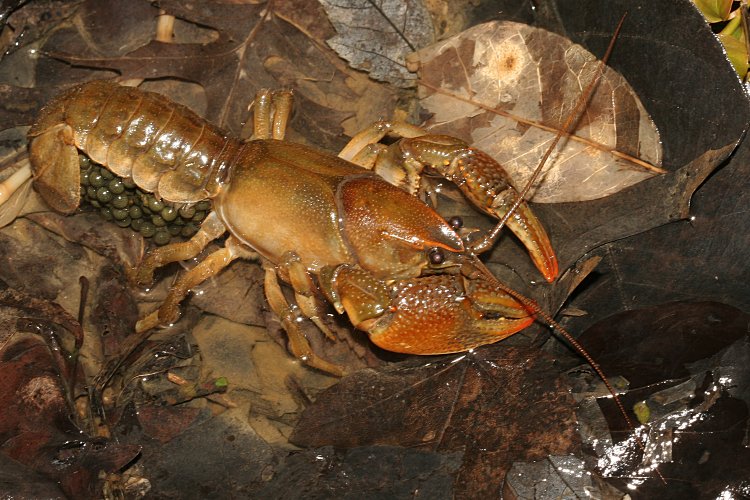
Interesting crayfish, with eggs.
American Toads, Bullfrogs, and Spring Peepers were also seen roadcrusing
in the early spring. Now on to some daytime finds.
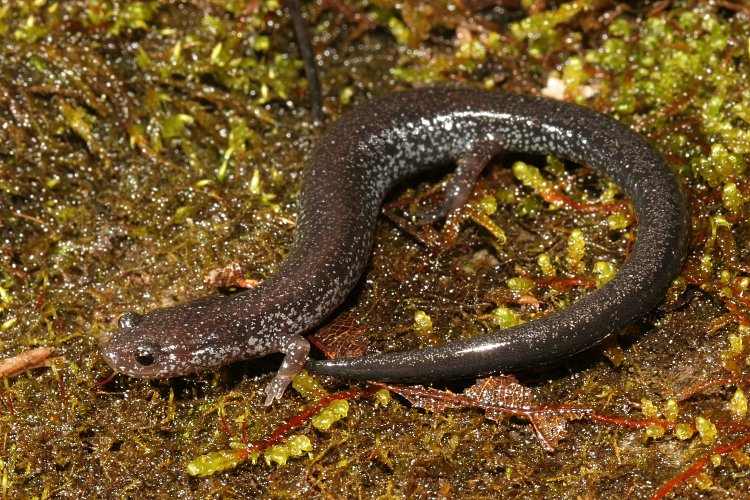
Ravine Salamander (Plethodon electromorphus).
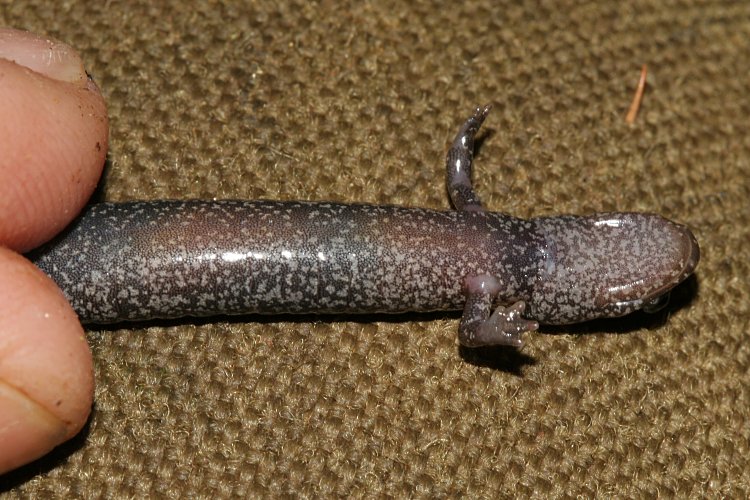
Executing the double-leg takedown on the above animal.
Often, the daffodils are all that remain of abandoned homesteads:
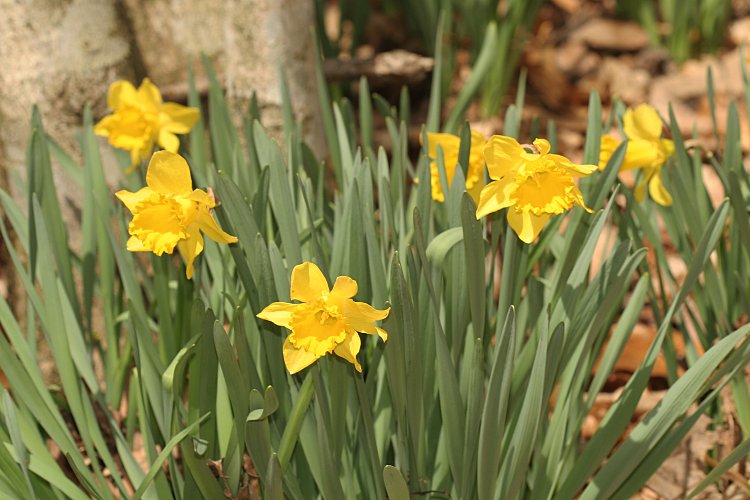

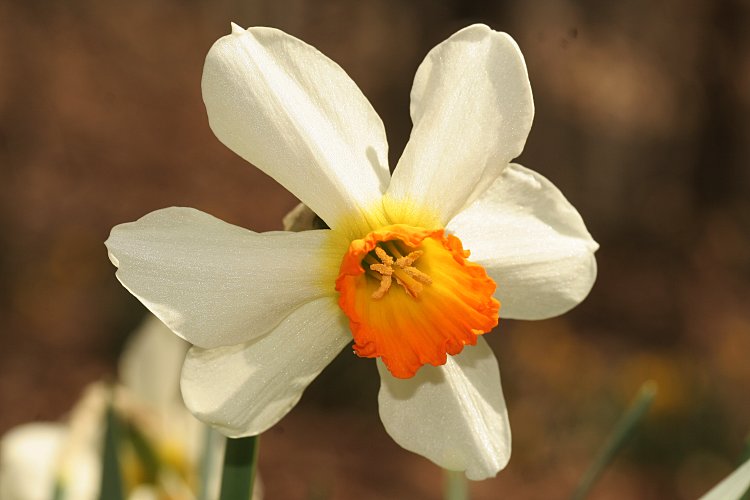
Seeing flowers like this out in the middle of nowhere really makes
me wonder what was going on here 50, 100, 150 years ago...
Not far from the above flowers, I spotted this:
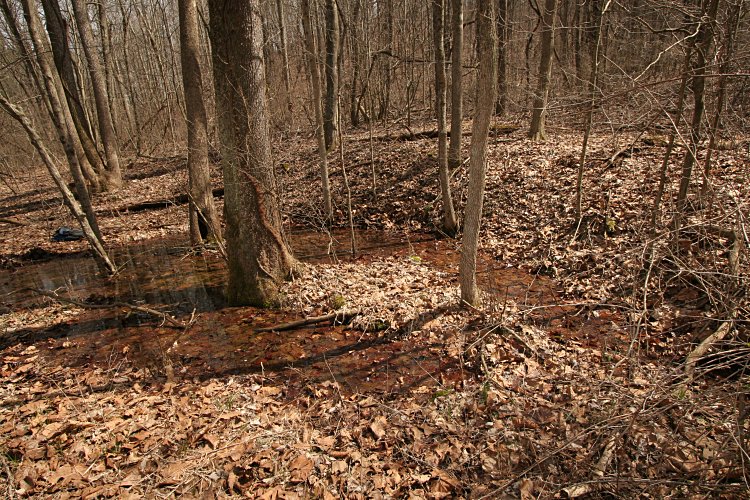
There is a spring feeding the pool on the right side of the photo.
Extensive dipnetting yielded nothing. Also there were no Ambystoma or
Wood Frog eggs, which seem to be in most pools of water this time of year.
However, in the leaf litter on the far side of the pool,
dead center in the photo, I found this:
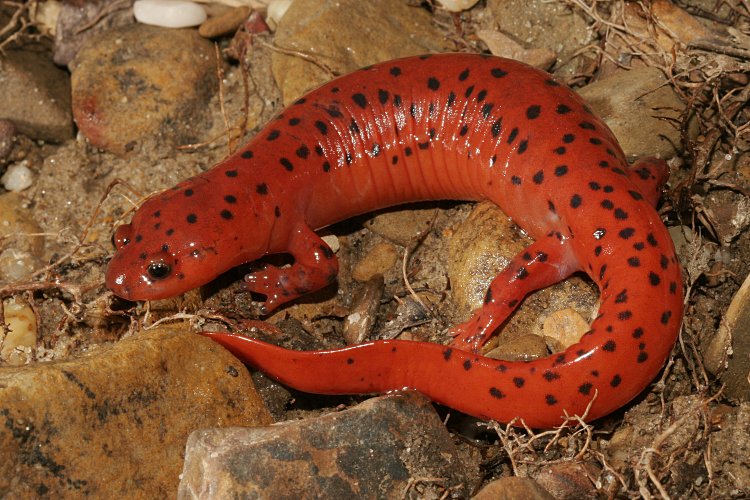
Mud Salamander (Pseudotriton montanus). Big old bruiser -- 6" TL,
refused to sit still for photos. I think I was pretty lucky to get his one.
An interesting egg mass:
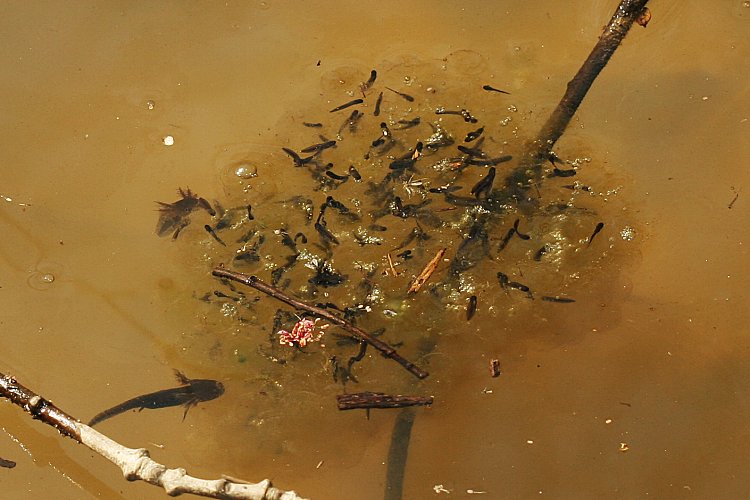
The Marbled Salamander larvae are feeding on the smaller larvae
as they are hatching.
I'm not actually sure if this is a Spotted Salamander or Wood Frog egg mass.
There were other for-sure maculatum eggs in the pool, and that's
what I assumed this one was, but now I'm not sure...
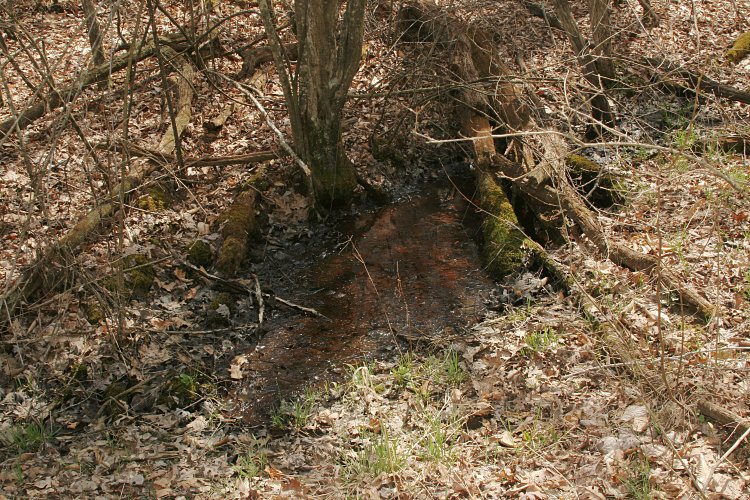
Fourtoed Salamander nesting habitat.
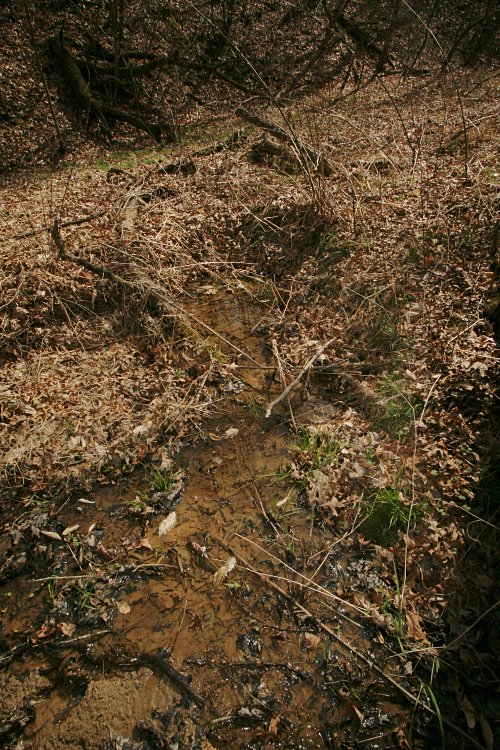
Mud Salamander habitat.
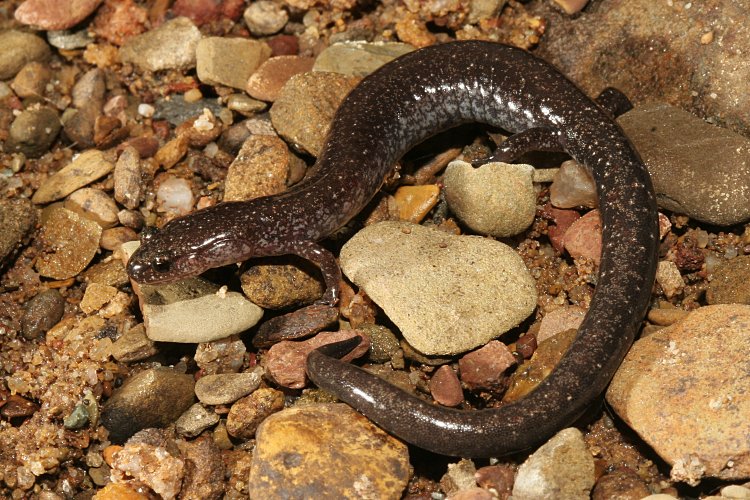
Ravine Salamander.
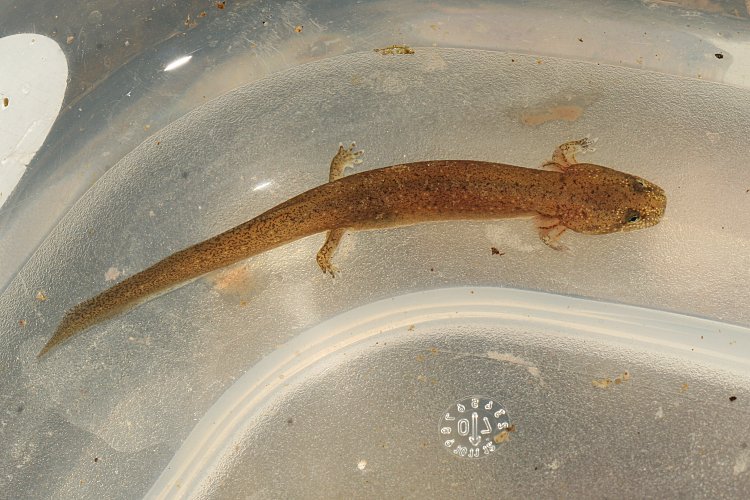
Pseudotriton ruber.
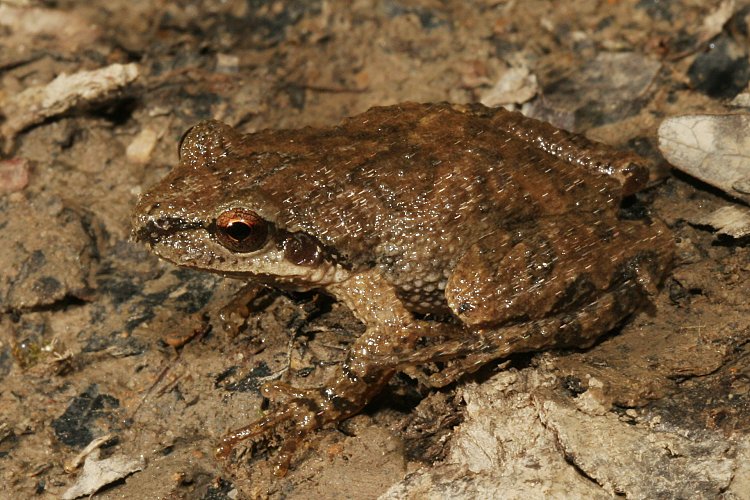
Pseudacris brachyphona.
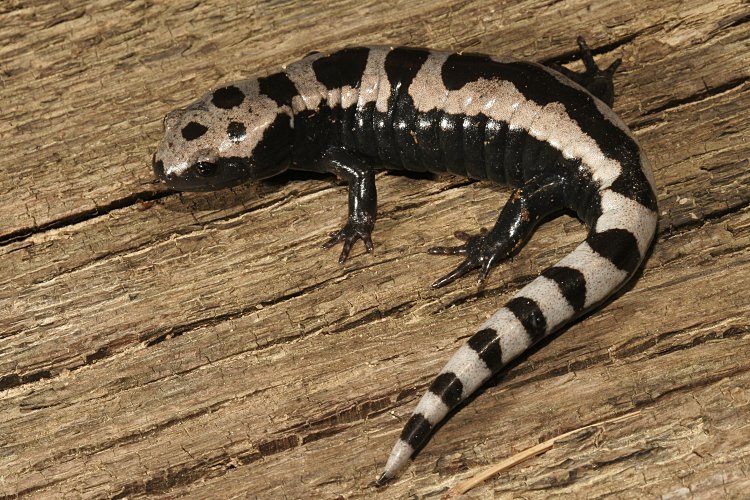
Marbled Salamander, posed on the board it was found under.
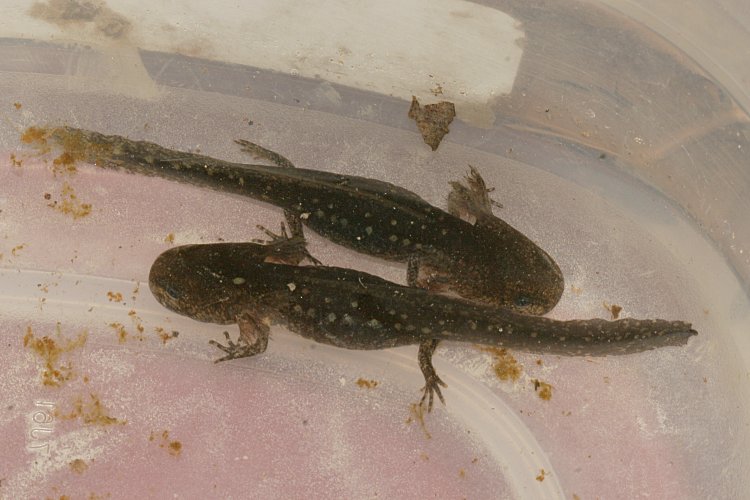
Marbled Salamander larvae.
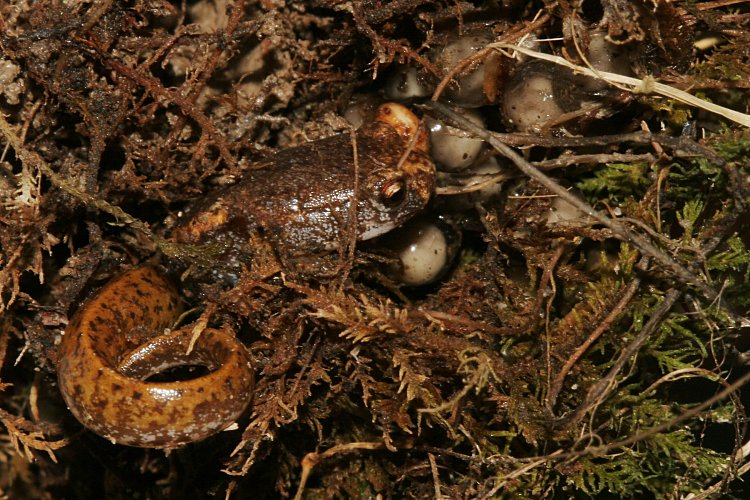
Fourtoed Salamander.
Productive habitat for larval Plethodontids:
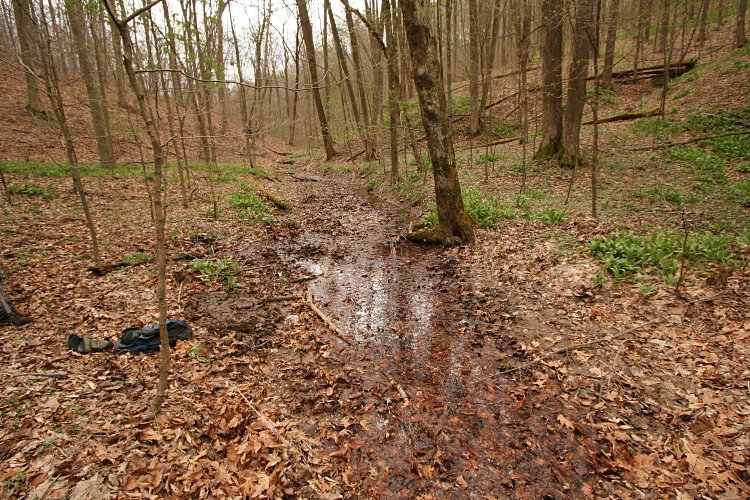
A low-gradient creek with lots of decaying leaves.
Dipnetting with Brian Folt yielded the following:
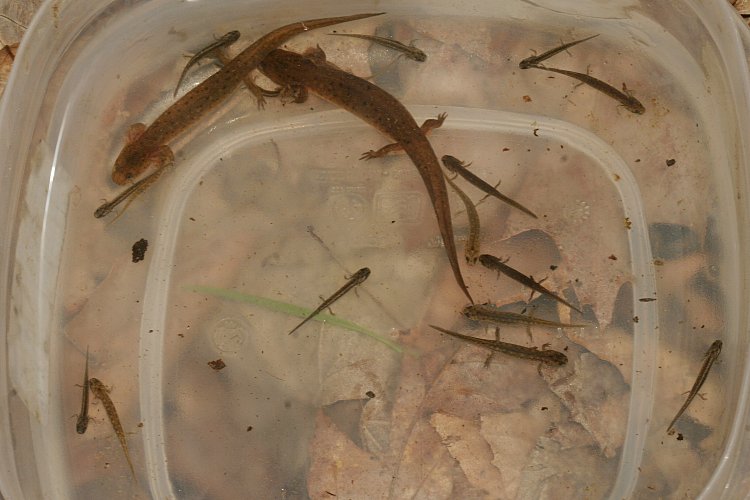
There are four species here.
Here's a subset:
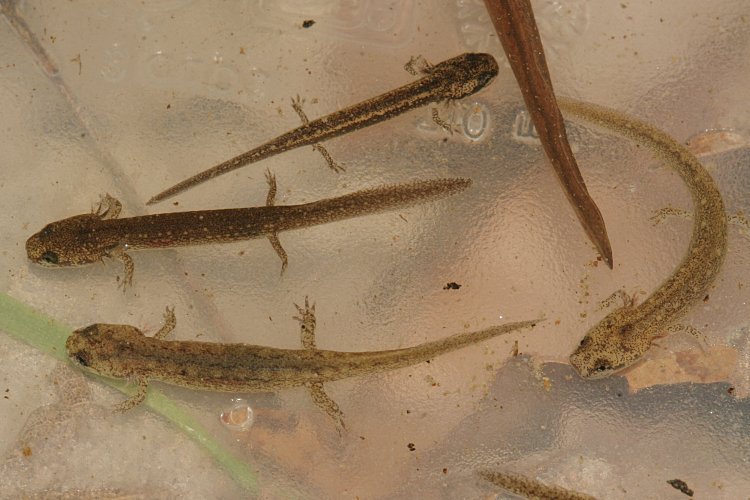
One of each species. From top to bottom on the left side:
Eurycea longicauda, Pseudotriton montanus,
Desmognathus fuscus, and on the right side Eurycea cirrigera.
They are all around 14 mm SVL.
There were also a couple of larger Mud Salamander larvae. Here's one:
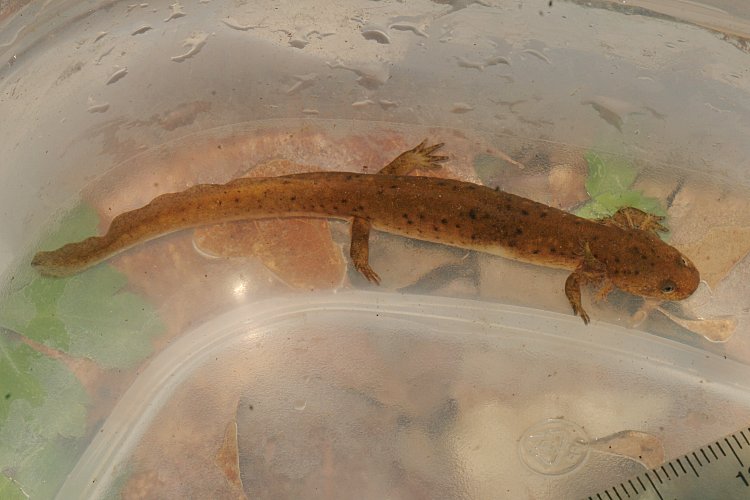
Mud Salamander.
Here's some more pics of the small fry:
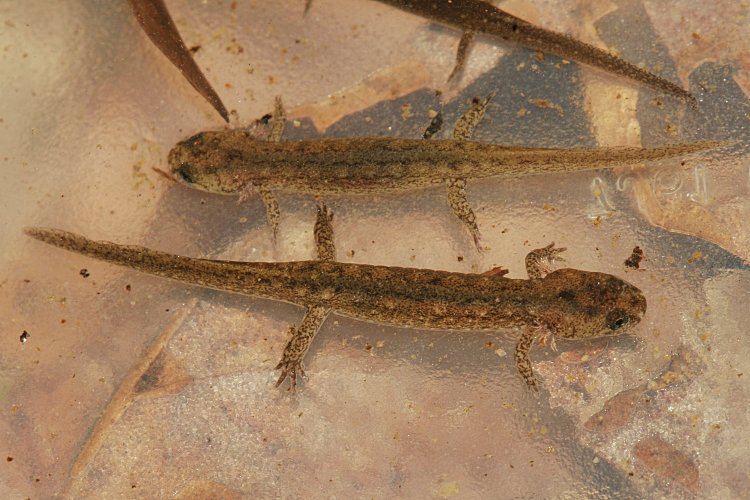
Desmognathus fuscus.
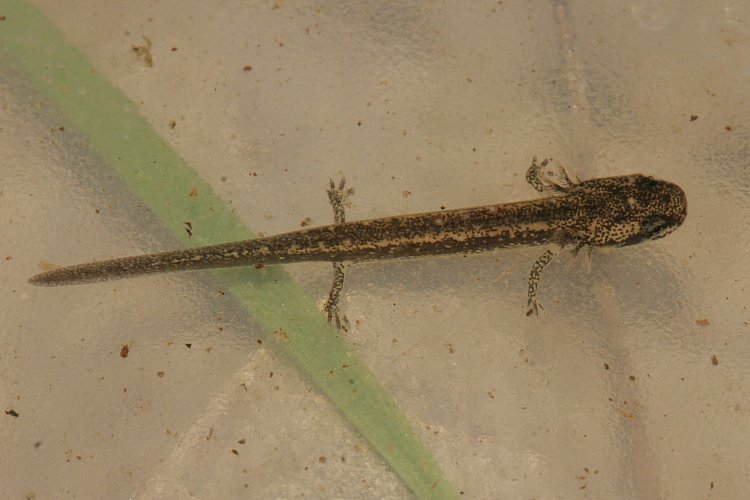
Eurycea longicauda.
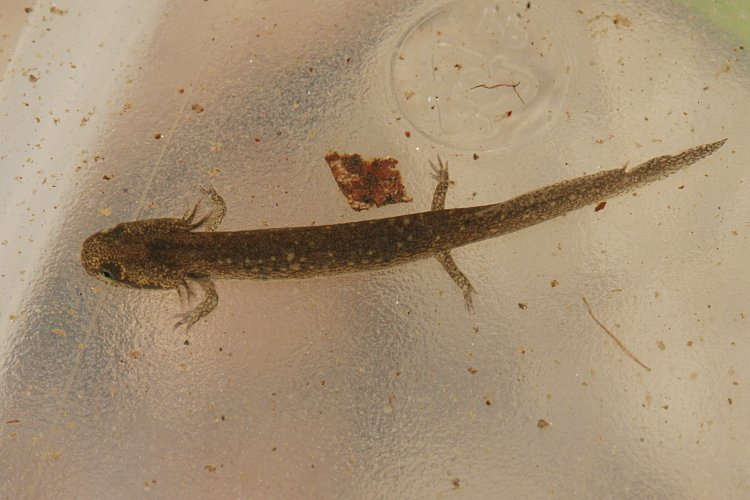
Pseudotriton montanus.
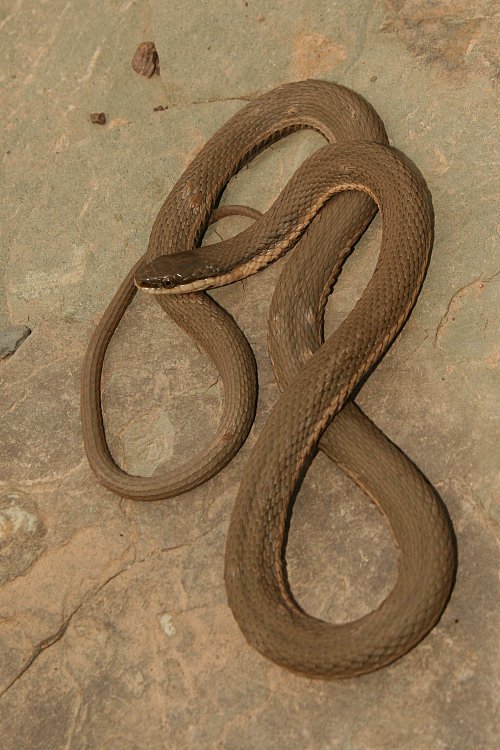
Queen Snake, the first I've ever seen in southeast Ohio.
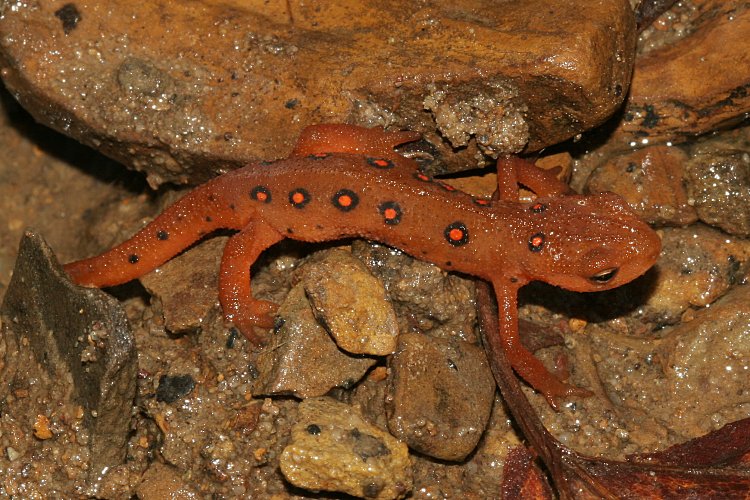
An Eft, always a pleasure to find these guys on the crawl.
For the most part, I have been focusing on amphibians this spring.
I have, however, looked for snakes opportunistically.
In this case, there was some roadside trash I couldn't pass by
without checking.
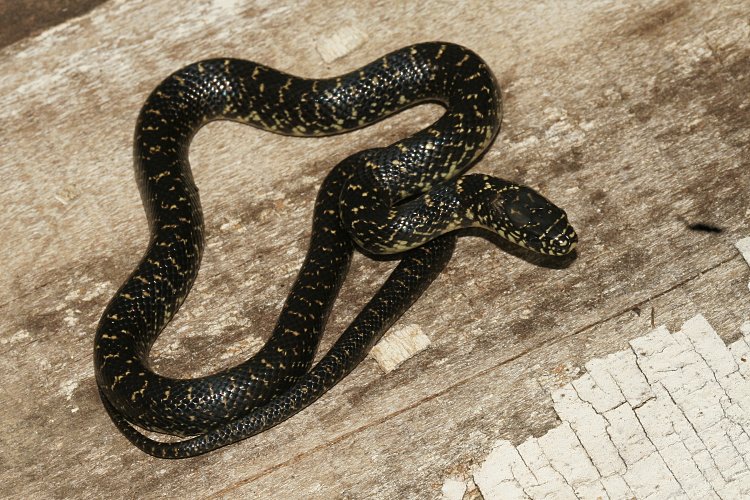
Black Kingsnake. A baby found in some cardboard.
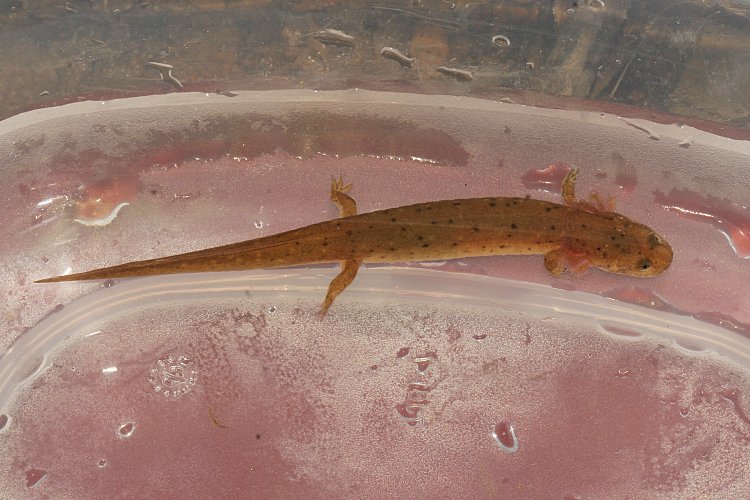
Pseudotriton montanus.

Eurycea cirrigera, mature larvae.
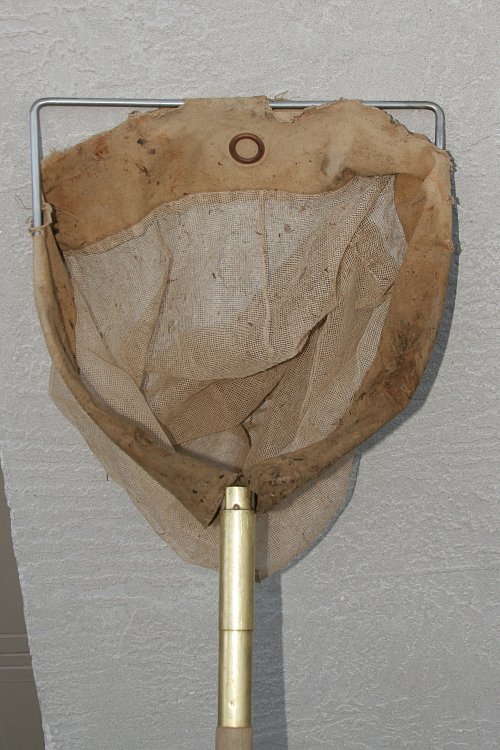
A tired dipnet.
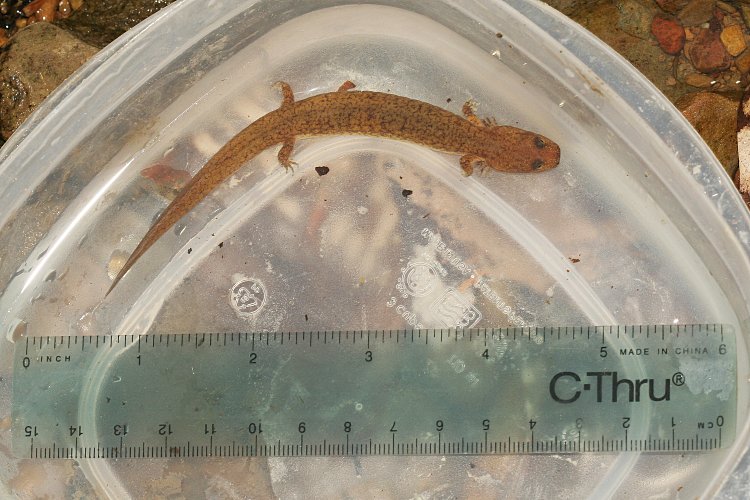
A large "Ohio" Spring Salamander larvae
(Gyrinophilus porphyriticus "inagnoscus"), from the type locality.
This form was included in the first edition of Conant's eastern
herp field guide, which I received for my eighth birthday in 1974.
Everything in this book, and the original Stebbins,
remains somewhat "real" to me.
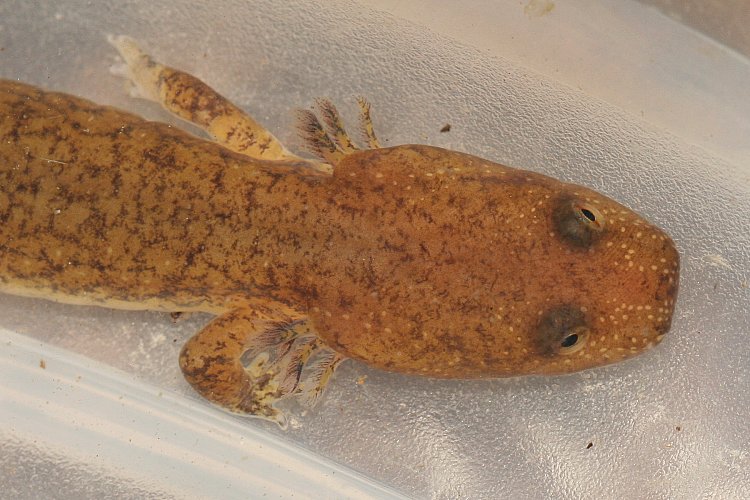
Same animal as above.
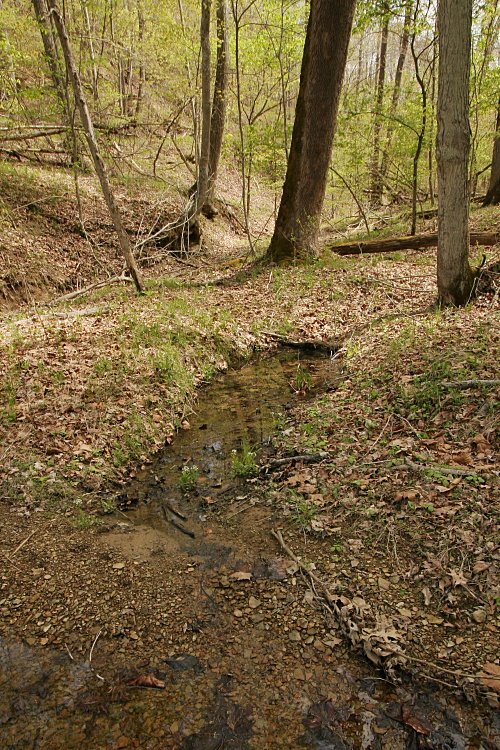
Mud Salamander habitat.
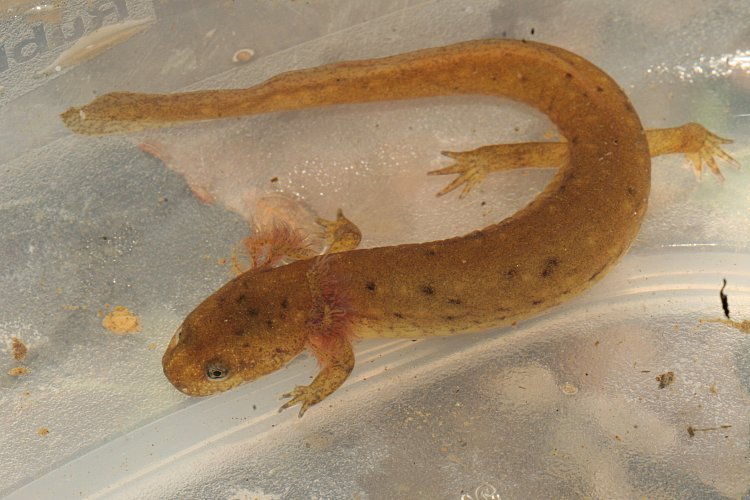
P. montanus, denizen of the above habitat.
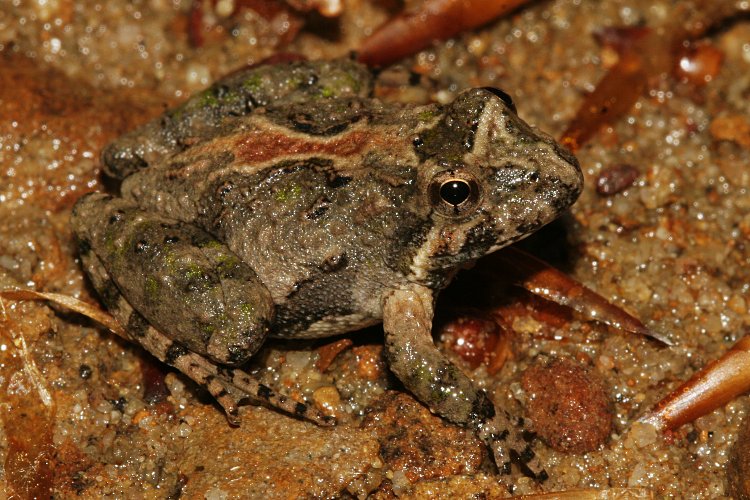
Acris crepitans, sparsely distributed but locally abundant in
southeast Ohio.
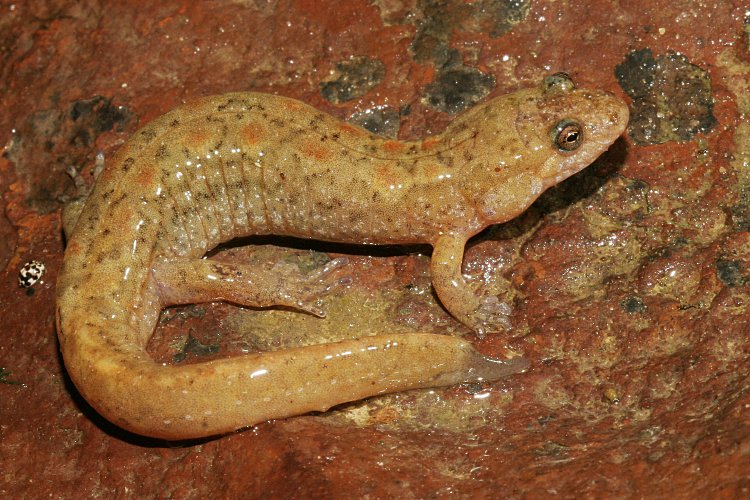
Desmognathus fuscus, found by Brian Folt.
I'm calling this the "latte phase".
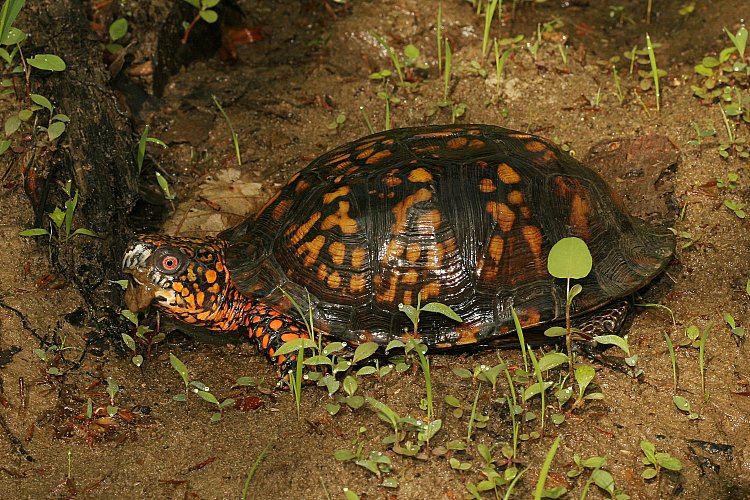
An attractive Box Turtle found on a wet morning.
Mining is normally bad news for amphibians.
This case is perhaps an exception:
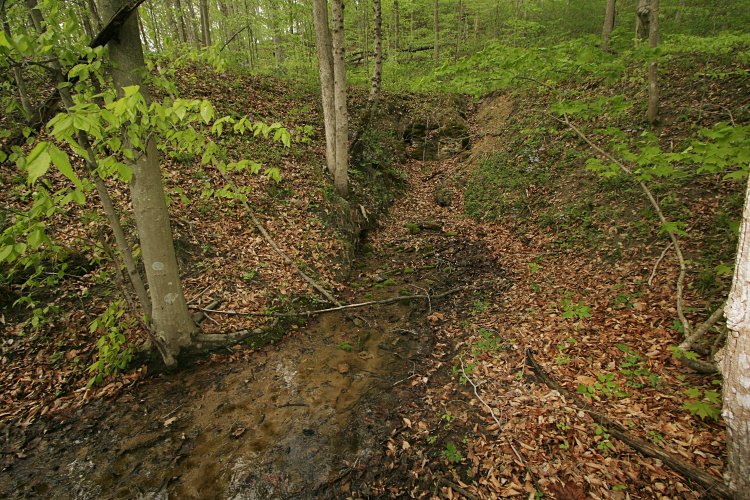
A strong, cold spring flowing out a hillside disturbed by mining.
Springs like this are not common in these parts. The mining consisted of
digging along a bench at a constant elevation on the hillside.
I suspect the mining took place over 100 years ago.
Dipnetting in the muck at the bottom of the photo yielded:
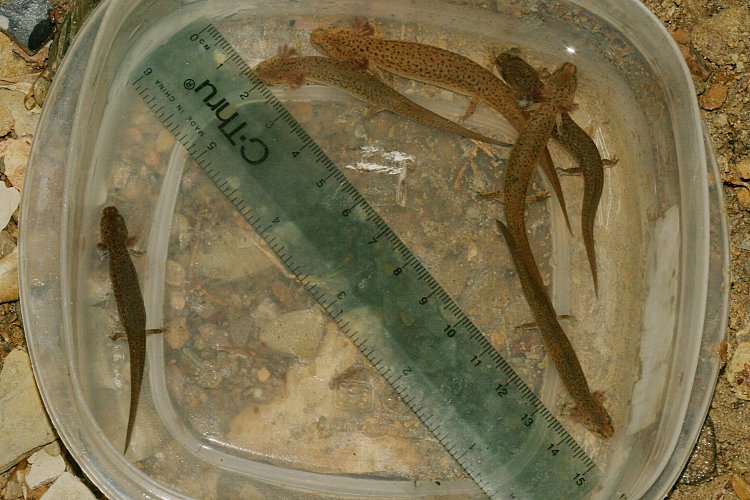
A bunch of Pseudotriton ruber.
In the areas I've been visiting, they are much harder to come by than
montanus. I haven't seen an adult ruber since 2007.
With all of these larvae, you'd think I'd be able to flip an adult in this
area, but no dice.
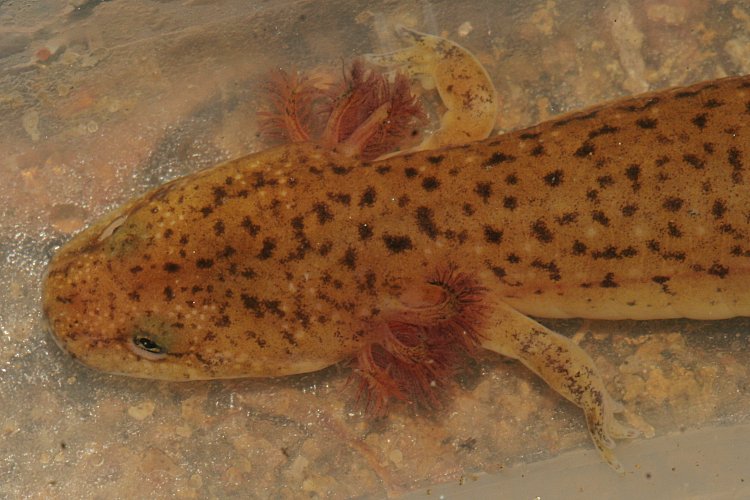
Closer look at the largest one of the above.
I thought for sure this was going to be a Black Ratsnake:
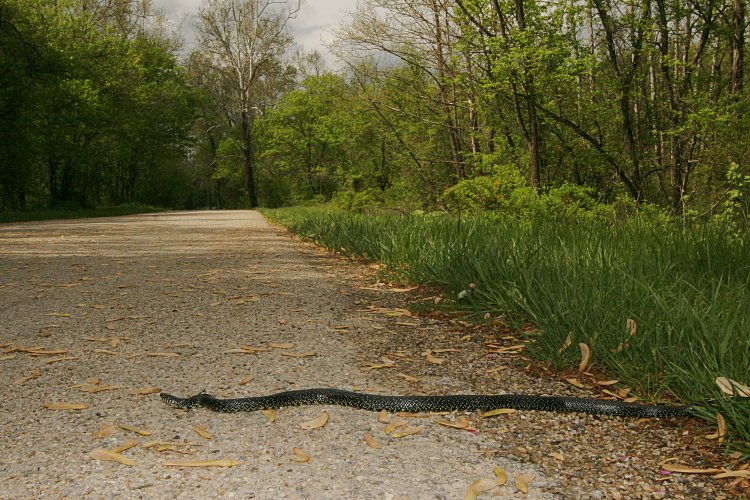
But it turned out to be a Black King. Shown as found.
I explored another spot that had an abundance of ruber larvae.
They are quite variable; here are two of them:
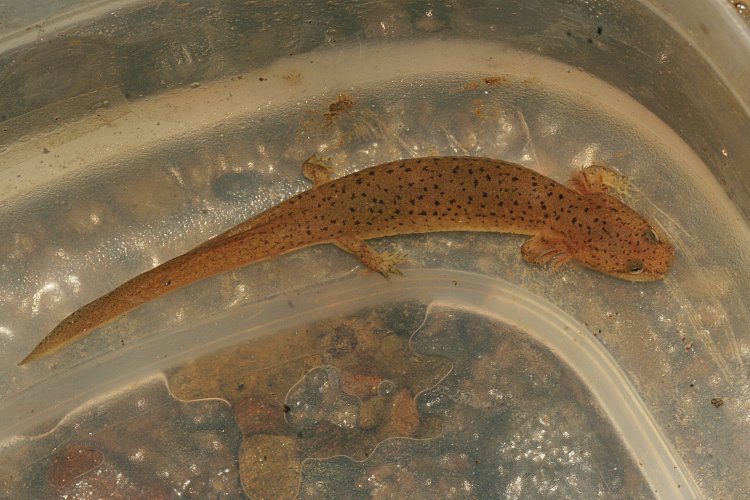
Pseudotriton ruber.
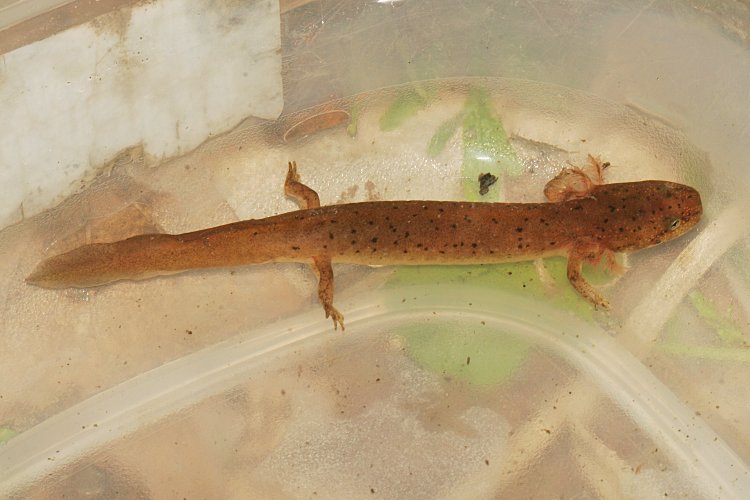
Pseudotriton ruber. This one has a pattern that could pass
for montanus. No luck with the adults here either.
Some attractive seepage habitat:
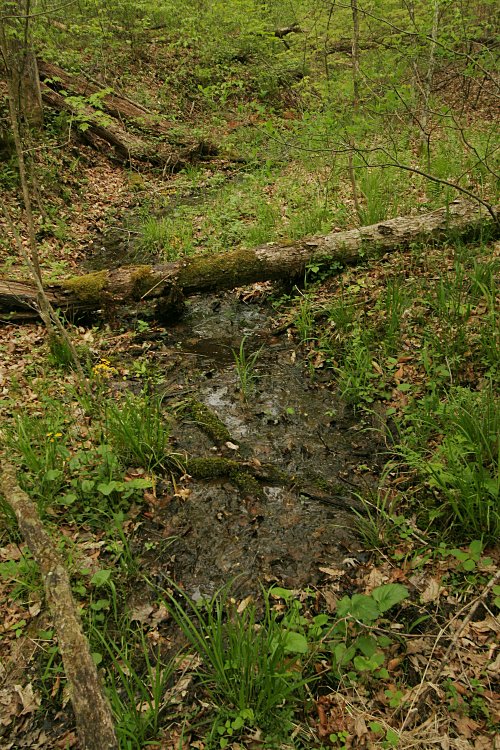
I thought this spot might work out for Hemidactylium, but I
didn't have any luck with that. I had already found one about a quarter
of a mile away, so that didn't bother me too much. This spot also looked like
it could harbor other things.
It was barely dipnettable -- you could only skim off a layer a layer
of muck which was about one inch thick. Nevertheless, I soon found this:

A hatchling Pseudotriton. The light spots on its sides
indicate that it is a montanus.
A lot more skim-netting yielded nothing. I pushed on a little longer than
I normally would, due to finding the above larva. Eventually I did
find this:
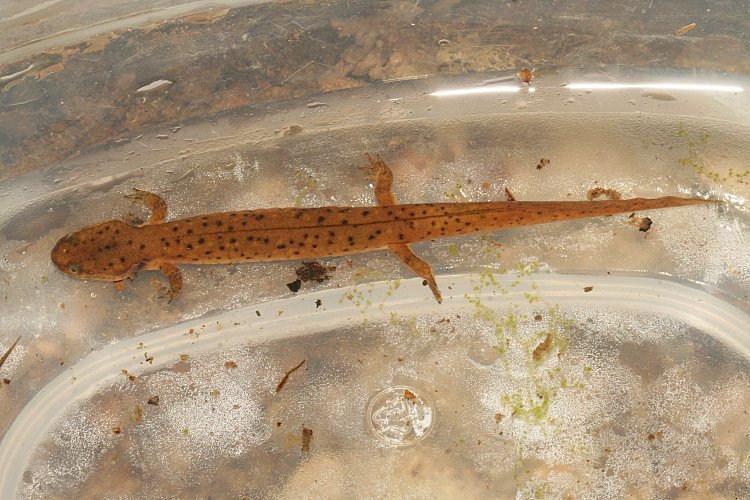
A large montanus larva.
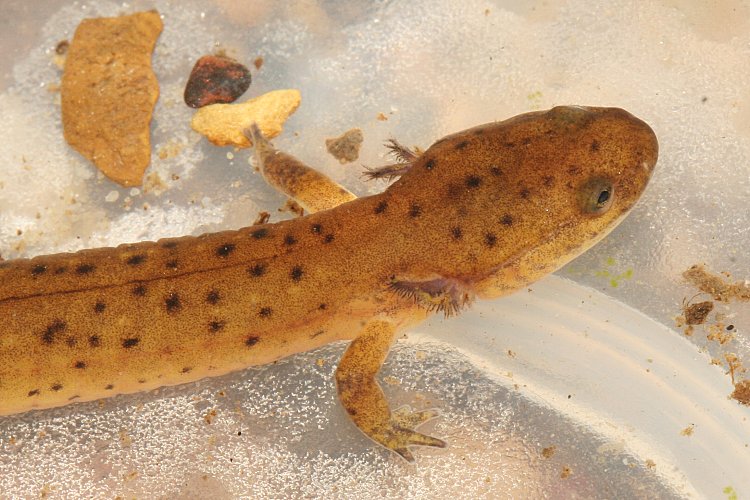
A closer look at the above. It is starting to morph.
Strong storms hit southeast Ohio in early May, bringing 24 hours of
steady rain which was heavy at times. The same storms hit
Tennessee and Kentucky even harder. I went out cruising in the heavy
rain on the night of May 2-3. American Toads and and Grey Treefrogs
were everywhere.
One of the first things I came across was this:
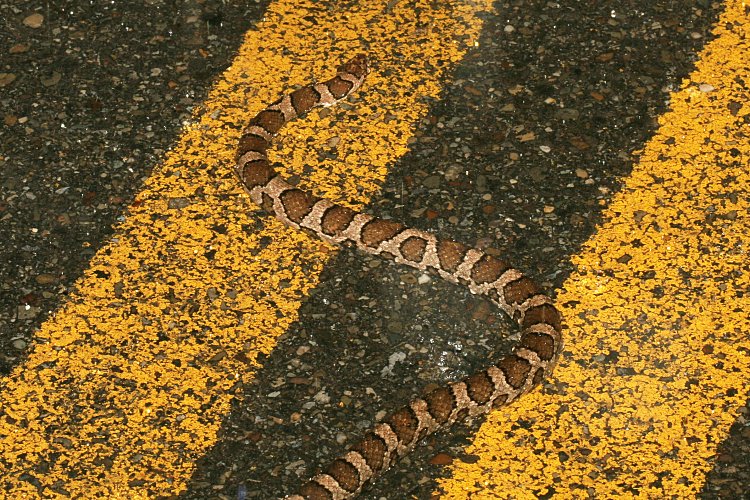
Milksnake, almost in situ.
It didn't take too long to find what I was hoping to see:
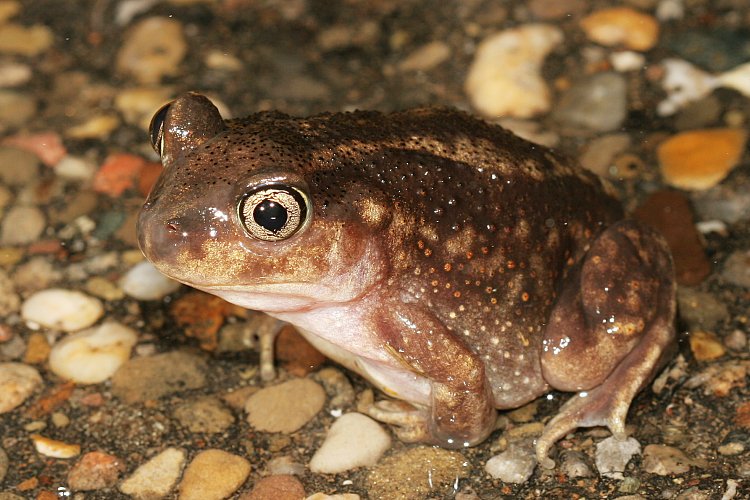
Eastern Spadefoot Toad (Scaphiopus holbrookii).
I soon switched gears and went to some other areas, hoping
to cruise a Pseudotriton or Gyrinophilus.
That didn't work out; here's a few other pics from the night:
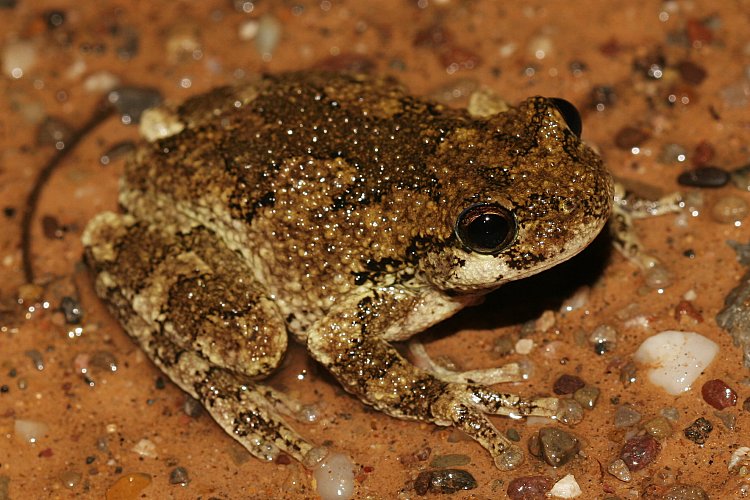
Grey Treefrog.

An attractive American Toad.
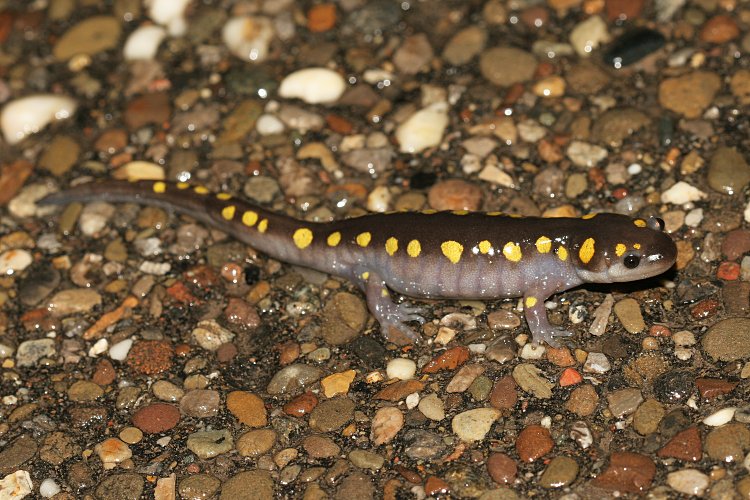
Spotted Salamander.
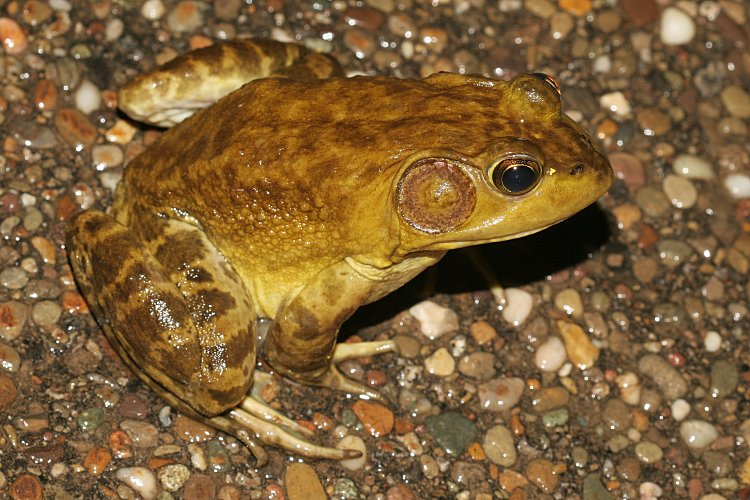
A large Bullfrog.
Our swimming pool is drained for maintenance at the moment. The next day,
it had quite a bit of water in it. And some amphibian life:
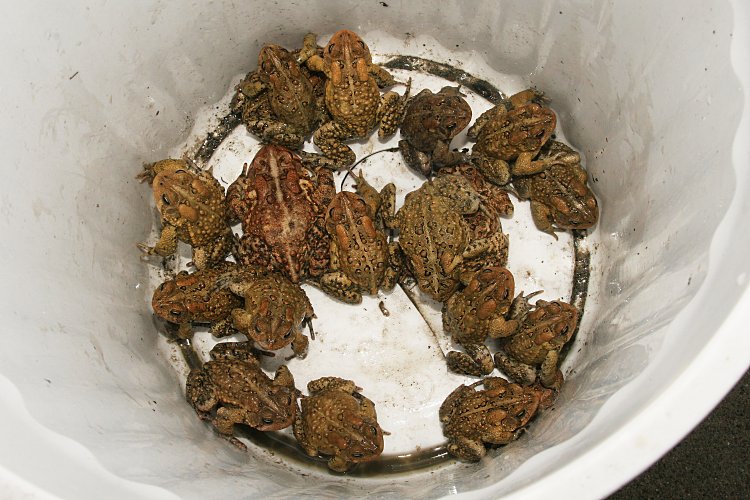
American Toads. There are 20 in the bucket. An additional amplectant pair
and their still-attached strings of eggs was transferred separately to
another pond.
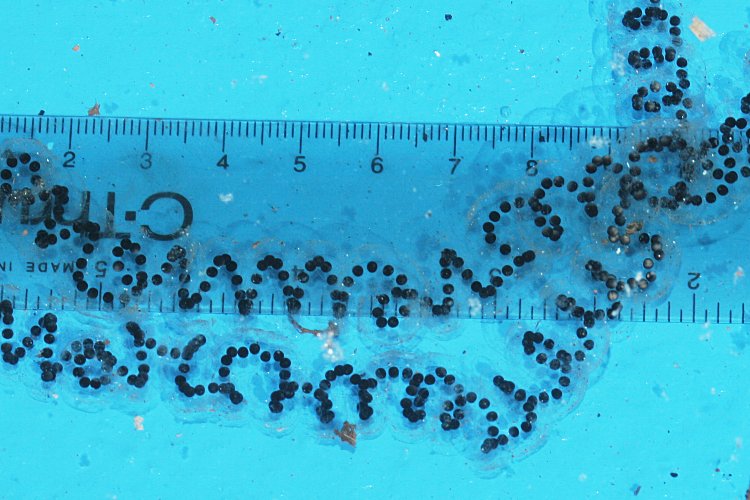
Freshly-laid American Toad eggs in the pool.
The next night was much cooler, with low humidity and starry skies.
Brian Folt and I were curious to see if the spadefoots were still out.
It turns out the were:
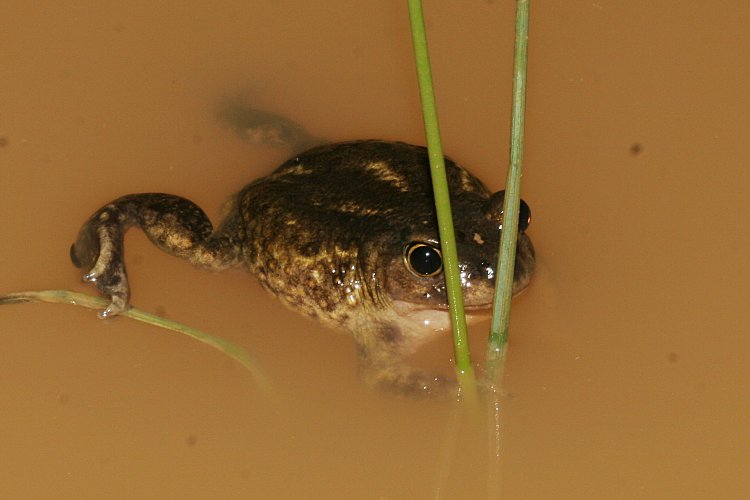
Eastern Spadefoot. But they weren't calling nearly as strongly, and there
did not appear to be any females present. Much better conditions for
photographers, though.
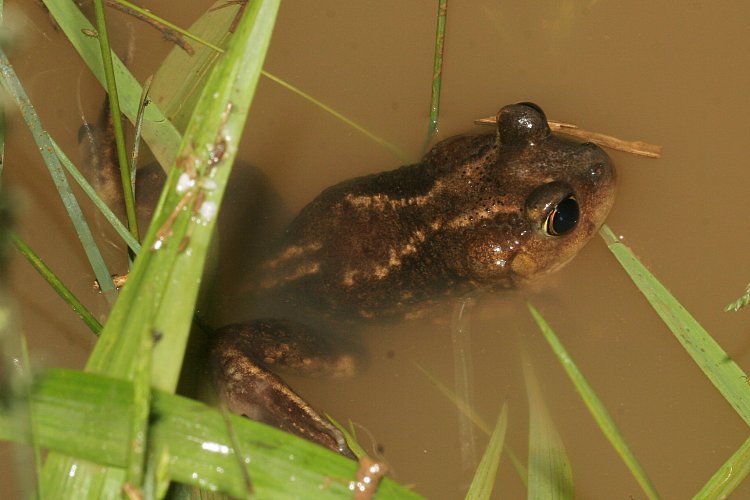
Eastern Spadefoot.
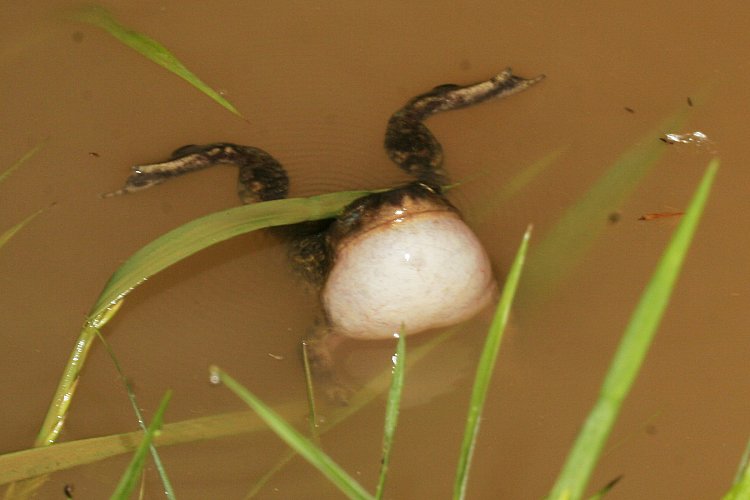
Eastern Spadefoot.
At one point, this emerged from the soup amongst the spadefoots:
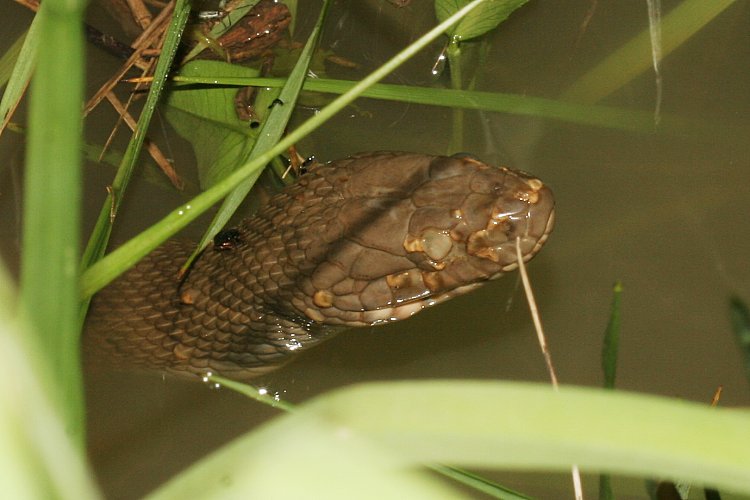
Northern Watersnake. It looked like it was having a rough day and was
perhaps not too happy about the flooding. On the other hand, maybe
it was feasting on the spadefoots?
My next outing, and last for this post, was rather uneventful.
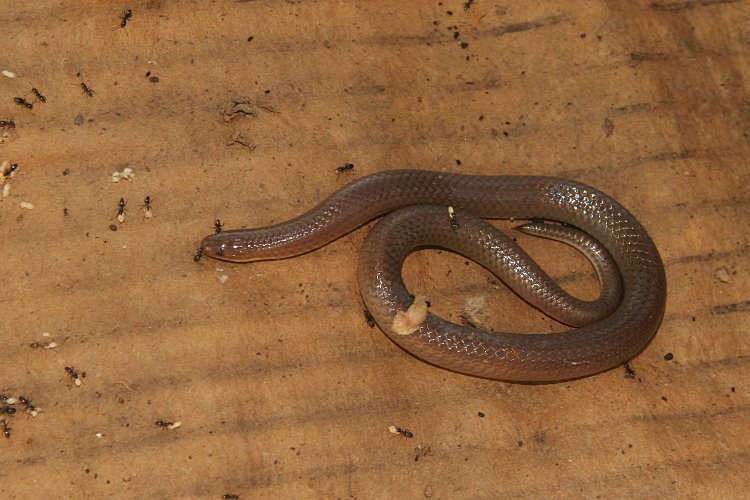
Worm Snake, as found in cardboard with a bunch of ants and ant pupae.
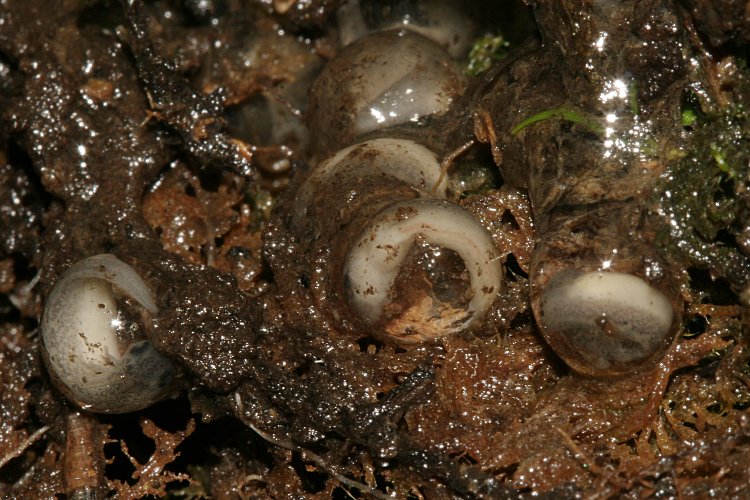
Fourtoed Salamander eggs, almost ready to hatch.
The female had already moved on.
That's all for now.






















































































